
A lot of users find that they are not having any sound on Facebook videos when they play them on computer. If that’s your case, don’t worry. Here’re 7 fixes proven useful to many users, and they might solve your Facebook sound issue right away.
Try these fixes:
You might not have to try them all. Simply work down the list until you find the one that does the trick.
- Check if it’s a video problem
- Unmute your browser
- Change to another browser
- Restart your computer
- Update your audio driver
- Change your default playback device
- Change your audio channel
Fix 1: Check if it’s a video problem
There are many reasons why a Facebook video has no sound, and the most common one is that the video is incorrectly encoded, or is silent at the first place. In that case, you can try other videos and see if they have audio issues as well.
Also don’t forget to check the video volume control in Facebook. It pops up at the bottom when you hover your mouse cursor over the video. Make sure you set the video volume correctly.
If the volume is set correctly and your no sound issue reappears on other videos, please move on to the next fix.
Fix 2: Unmute your browser
Your browser won’t make any sound when it’s muted, whether deliberately or accidentally. You can follow these steps to check:
- On the lower-right corner of your desktop, right-click the volume icon and select Open Volume mixer.
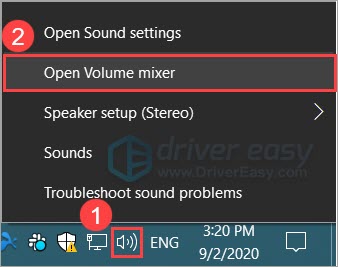
- In the Volume Mixer window, hold and drag the slider for your browser (mine is Chrome) to turn up the volume.
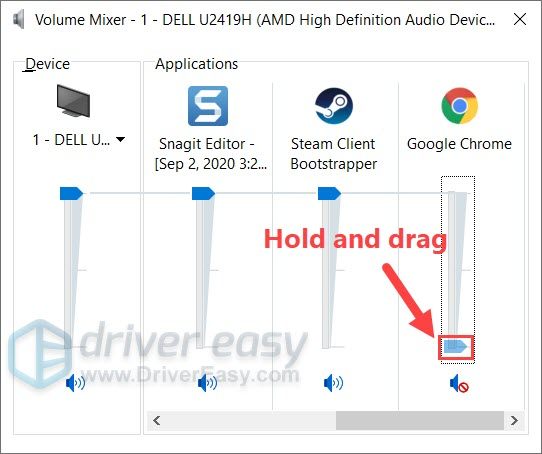
- Play your video and see if you hear any sound.
If this method doesn’t fix your problem, please take a look at the next one.
Fix 3: Change to another browser
If you’ve installed plugins on your current web browser, try playing the same video on another browser. Some browser extensions can mute tabs and some might cause your browser to function incorrectly. If the problem doesn’t occur on another browser, try disabling all the plugins on the previous browser and test again.
If the problem persists after changing your browser, please move on to the next fix.
Fix 4: Restart your computer
It may sound silly, but rebooting your computer actually solves many problems. Especially when you’ve kept your PC running for a long period, and some programs start to function improperly. In all cases, a restart resets the current state of a software, and it might just fix your no sound issue at the same time.
If restarting your computer doesn’t help either, please continue to the next method below.
Fix 5: Update your audio driver
Sound problems can occur when you’re using a faulty or outdated audio driver. That’s why we always recommend keeping your drivers up to date. Driver updates provide security patches and feature enhancements, and it usually fixes many strange and stubborn issues.
There are mainly 2 ways you can update your audio driver: manually or automatically.
Option 1: Update your audio driver manually
To update your audio driver manually, first go to your motherboard manufacturer’s website and search for your model. Audio drivers are usually located in the Support or Download page, with a name similar to “Realtek HD Driver“. Remember to choose only the installer that’s compatible with your operating system.
Option 2: Update your audio driver automatically (Recommended)
If you don’t have the time, patience or computer skills to update your audio driver manually, you can, instead, do it automatically with Driver Easy. Driver Easy will automatically recognize your system and find the correct drivers for your exact sound device, and your Windows version, and it will download and install them correctly:
- Download and install Driver Easy.
- Run Driver Easy, then click Scan Now. Driver Easy will then scan your computer and detect any problem drivers.

- Click Update All to automatically download and install the correct version of all the drivers that are missing or out of date on your system.
(This requires the Pro version – you’ll be prompted to upgrade when you click Update All. If you don’t want to pay for the Pro version, you can still download and install all the drivers you need with the free version; you just have to download them one at a time, and manually install them, the normal Windows way.)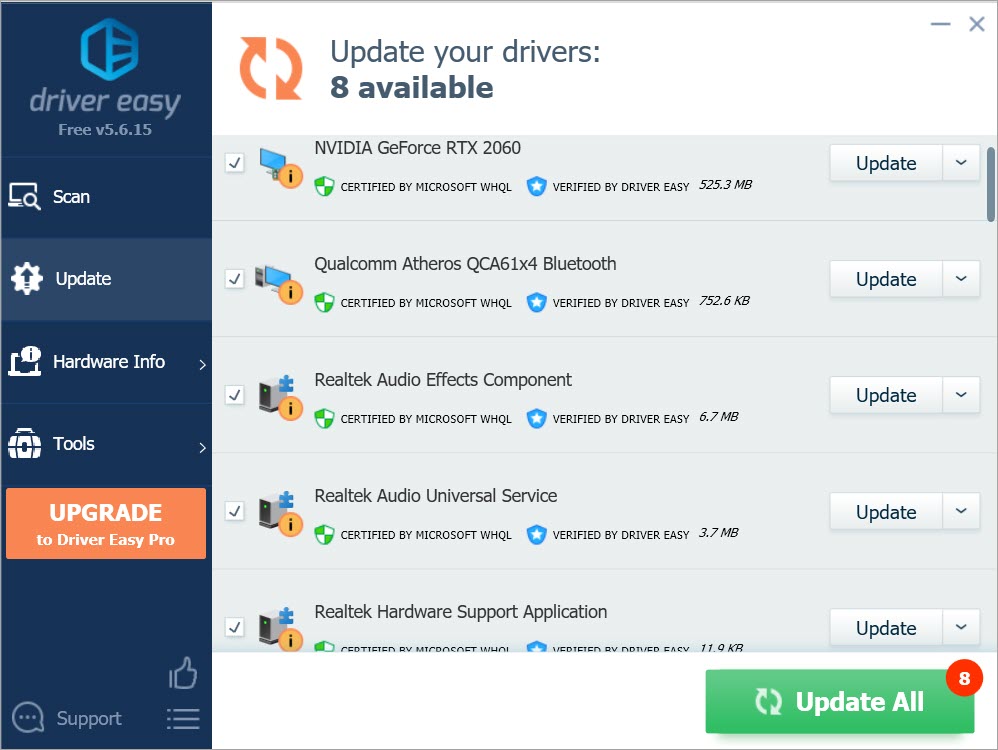
Once you’ve updated your audio driver, restart your computer for it to take full effect. Then you can play some videos and see if your problem has gone away.
If this fix doesn’t give you any luck, please try the next one below.
Fix 6: Change your default playback device
If you set a wrong playback device, it’s normal that you don’t hear any sound. To check if you set the playback device correctly, follow these steps:
- On your keyboard, press the Windows logo key and R at the same time to invoke the Run box. Then type mmsys.cpl and hit Enter.
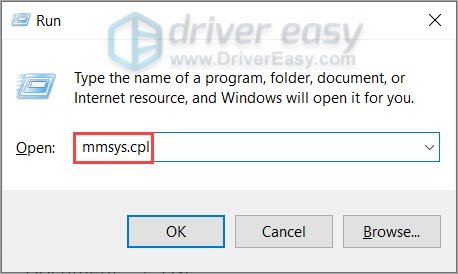
- Make sure you’re in the Playback tab. Select your desired output device (in my case it’s Speakers) then click Set default. Finally, click OK to save the changes.
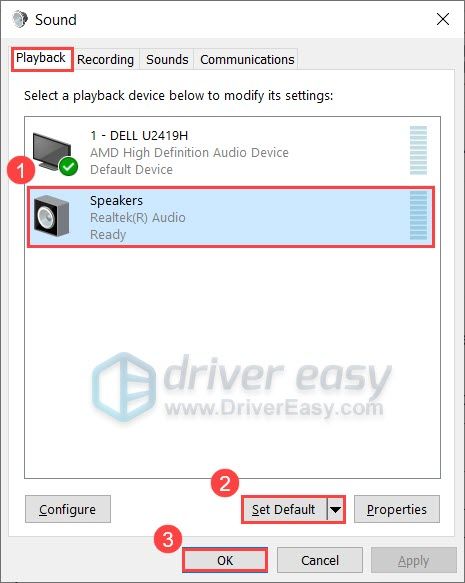
- Play some videos and see if it fixed your no sound issue.
If changing your default output device doesn’t solve your problem, don’t worry. There’s still one last fix you can try.
Fix 7: Change your audio channel
Some users reported that changing the audio channel saves the day, so it might also be a potential solution for your case.
Here’s how to do it:
- On your keyboard, press the Windows logo key and R at the same time to invoke the Run box. Then type mmsys.cpl and hit Enter.

- Select your default playback device and click Configure.
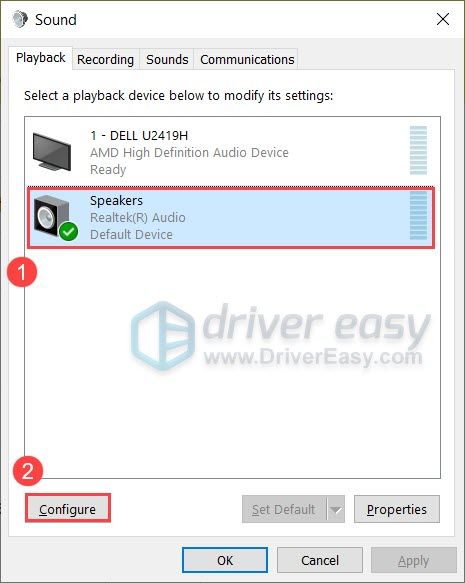
- For Audio channels, select Stereo and click Next.

- Check the box next to Front left and right. Click Next to continue.
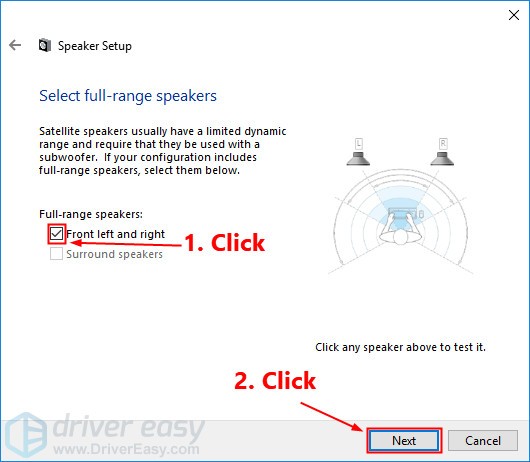
- Click Finish to save the changes.
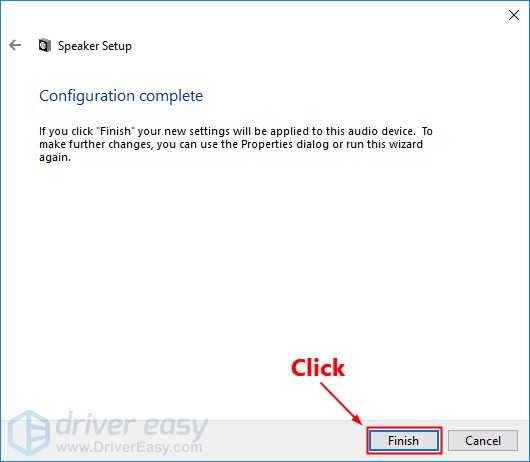
- Play some Facebook videos and see if your problem has disappeared.
So these are the fixes for your Facebook no sound issue. Hopefully, you’ve solved the problem and can now enjoy all kinds of Facebook videos. And of course, if you have any questions or suggestions, just drop a comment and we’ll get back to you.





